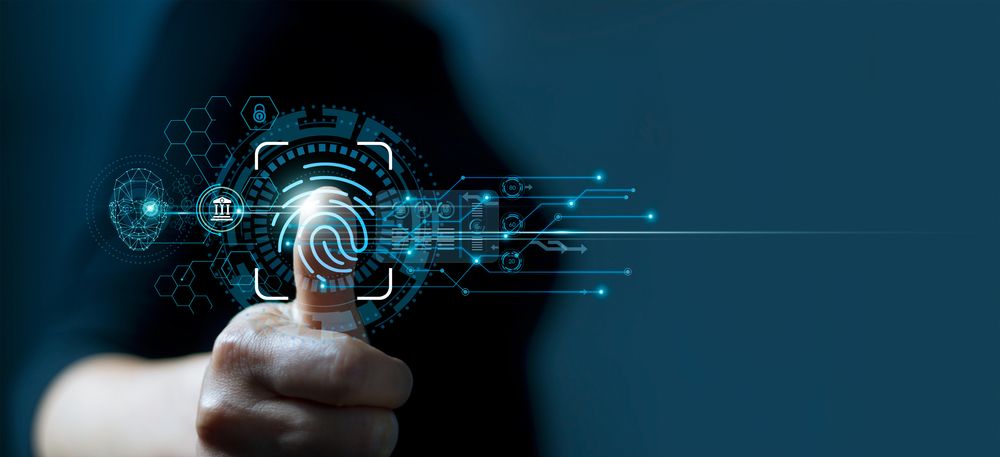
In the ever-evolving landscape of financial services, the importance of account safety cannot be overstated. As technology advances, so do the methods by which banks protect their customers’ sensitive information and hard-earned money. One of the most groundbreaking advancements in this arena is the integration of biometric security. This innovation is transforming the way users access their accounts and interact with banking services, providing an unprecedented level of protection and convenience.
The Rise of Biometrics in Banking
Gone are the days when a simple password or PIN was sufficient to safeguard your banking details. Cyber threats have become increasingly sophisticated, necessitating a more robust line of defense. Biometric security has risen to the challenge, offering a more secure and user-friendly alternative. Biometrics refers to the authentication techniques that rely on the unique biological characteristics of individuals. This includes fingerprint scanning, facial recognition, voice identification, and even iris scanning.
Fingerprint scanning, one of the most prevalent forms of biometrics, has been widely adopted by banks around the world. It offers a quick and secure way to access mobile banking apps, with a simple touch replacing the need to input a password. Facial recognition is another technology that’s gaining traction, with some banks implementing it within their mobile apps or at ATMs for identity verification. Voice identification and iris scanning are also on the rise, offering additional layers of security with their unique benefits.
Enhancing Security with Biometric Authentication
The primary allure of biometric authentication is its inherent security. Traditional passwords can be hacked, forgotten, or stolen, but biometric data is much harder to replicate or forge. This is because biometric traits are unique to each individual and are not easily transferred or duplicated. As a result, banking transactions authenticated with biometrics are considered to be significantly more secure than those relying on passwords or PINs alone.
Moreover, biometrics reduce the risk of unauthorized access. Even if a fraudster manages to obtain your device, they won’t be able to bypass the biometric checks without your physical presence. Banks are also using biometrics in conjunction with other security measures, such as one-time passwords (OTPs) or security tokens, to implement two-factor or multi-factor authentication processes that provide an additional layer of security.
The Convenience Factor
While security is paramount, customer convenience is another major factor driving the adoption of biometrics in banking. Remembering a multitude of passwords can be burdensome, and the frustration of being locked out of an account due to forgotten credentials is an experience many would prefer to avoid. Biometric authentication eliminates this hassle by allowing customers to access their accounts with a simple, quick action that is both easy to perform and difficult to forge.
Biometric technology also streamlines the banking process, making transactions faster and more efficient. For example, a customer who wants to withdraw cash from an ATM equipped with biometric technology can do so by simply scanning their fingerprint or face, without the need to carry a physical card or remember a PIN.
The Impact of Biometrics on Customer Experience
As banks continue to innovate, the focus on enhancing customer experience is crucial. Biometric security not only safeguards accounts but also contributes to a smoother and more personalized banking experience. When customers feel confident about the security of their transactions, they are more likely to use digital banking services frequently and explore additional offerings from their financial institutions.
Biometric technology also has the potential to reduce the incidence of fraud-related customer service issues. By proactively securing accounts with biometrics, banks can prevent fraud before it occurs, thereby saving customers from the stress and inconvenience of dealing with compromised account situations.
Future Trends and Challenges
While the integration of biometric security in banking is a significant step forward, the journey is far from over. The technology is constantly evolving, and financial institutions must stay ahead of the curve to ensure that their security measures remain effective against emerging threats. Furthermore, as biometric technology becomes more sophisticated, so do the methods employed by cybercriminals to exploit potential vulnerabilities.
Another challenge facing the widespread adoption of biometric security is the need for standardization and regulation. Ensuring that biometric data is stored, processed, and transmitted securely is paramount to maintaining customer trust. Privacy concerns also need to be addressed, as customers must be confident that their biometric information will not be misused or mishandled.
Biometric security represents a significant innovation in the banking sector, providing enhanced account safety and a better customer experience. While there are challenges to address, the benefits of this technology are clear. As biometric solutions become more advanced and widely adopted, we can expect banking to become even more secure and convenient for customers. The banks that embrace these innovations and effectively manage the associated risks will be well-positioned to lead the industry into a safer, more secure future.
